Newhouse to the NFL Network: Alumna Sara Ries ‘05 Oversees NFL Draft Coverage
The NFL draft weekend is one of the busiest times of the offseason for Sara Ries ’05, the senior director at the NFL Network. Almost a year’s worth of preparation culminates with a hectic, three-day event watched closely by dedicated football fans.
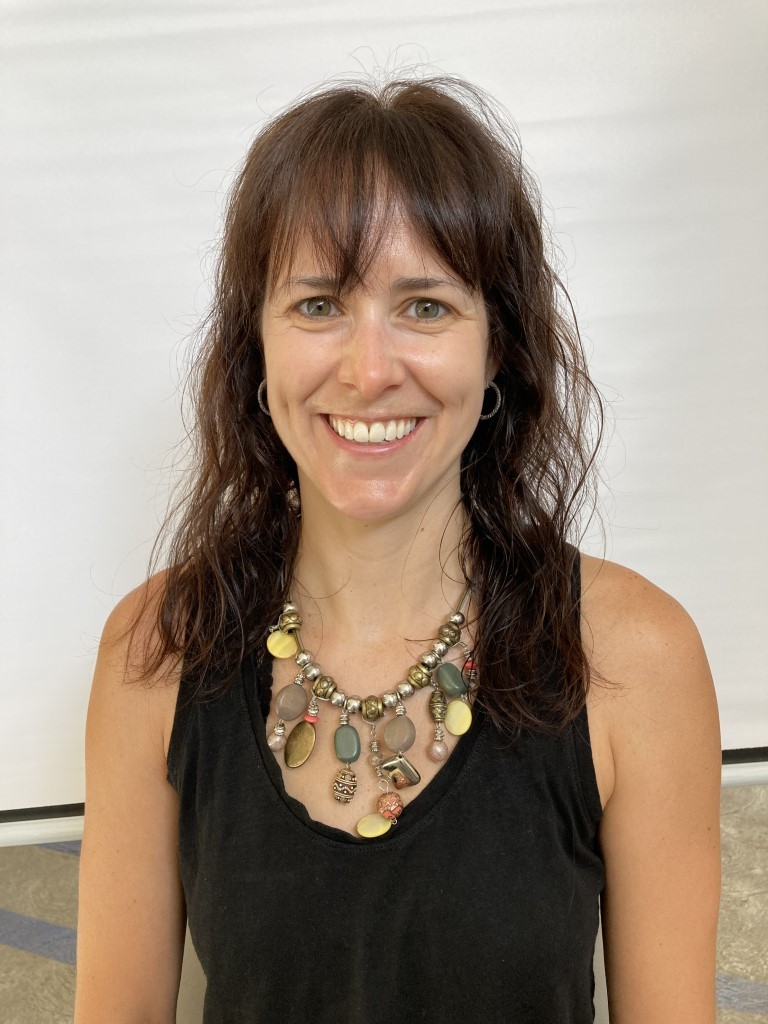
Ries, a broadcast journalism alumna, started as a production assistant for the network. She answered a few questions recently about how Newhouse prepared her for her career; covering the draft; her experience as a woman in a male-dominated field; and advice for students who want to get into the sports industry. Below are excerpts from her recent interview.
How did your Newhouse experience help you in your career journey?
I really feel that we gained a basis editorial background that we developed over the four years, and it was constant. And I think then you can kind of sprinkle in the other aspects because we were able to touch all the equipment nice and early at Newhouse. I loved that because I could take a camera out with me and shoot, there wasn’t a barrier to entry for that piece.
And so, then I could kind of not only be creative, but learn what I wanted to learn at my pace. And I did some work at the TV station on campus and the radio station as well because I thought the more I could do, the better. And that’s exactly what I took into my work here at the network, was the moment you walk in the door, just be ready to do anything. And whether it [would] be putting yourself out there and putting your hand up and saying “I’ll do it, I’ll learn it” or … just being ready to jump at any opportunity. That was something that Syracuse always helped kind of instilled in us and still to this day, I tell that to everyone.
The NFL draft has turned into a big offseason event for football fans. What do you like most about overseeing and producing draft coverage?
I really think what’s been cool about the draft is really making the city and the moment itself unique. How do we incorporate the music? How do we incorporate these big names that people know into our coverage? And how do we make those moments special? So, it’s unique every year. And honestly, at the end of the day, I feel just lucky to be a part of it.
And I’m here for the chaos, the trades and all the madness because that’s truly what makes it fun. And it’s like “boom,” we’ve got to go on to the next player, we’ve got to go on to the next team. And that kind of gives you the adrenaline rush that I think a lot of us got into live TV for.
Would you mind sharing your experience as a woman in sports, and give advice for women who are hoping to break into the industry?
When I first started, there were still very few women who were really, I think, visible to us. And that wasn’t just because we were in sports—we were pretty much never on TV. I mean, aside from the Olympics, there wasn’t that much coverage [of women’s sports]. I feel like we just weren’t really being seen, it was just about the women who were on TV. … I remember interviewing people at ESPN, some of their women were there when I did an internship, and I was just desperate to talk to them about what they had experienced. Because really, behind the scenes, there were two or three women, but that was it. I think there’s just been such a wave of women in industry and that I really hope it continues and it should be that way because we have to really be able to see and experience sports through everyone’s eyes before we can really make the coverage of sports fair and equal. You can’t just have one perspective.
The only way we can grow is for women to keep pushing their way in, keep wanting their voice to be heard, whether you’re on the sidelines as a fan raising your hand, or whether you’re really wanting to break into this industry. And just know that there are those of us here with welcome arms for whoever wants to join.
Newhouse Alumna Amanda Quick ’14, G’16 to be Recognized at University Alumni Awards Celebration
Syracuse University will honor eight distinguished members of the Orange community during the 2024 Alumni Awards Celebration, which are being held from 4:30-8:30 p.m. on Friday, April 12, 2024. The celebration, which is free to attend, will occur in the National Veterans Resource Center at the Daniel and Gayle D’Aniello Building (NVRC).
Attendees will have the opportunity to hear from several student organizations who will be fundraising for exciting projects, enjoy a spirited awards ceremony hosted by student Nicole Aponte ’24 and mingle with honorees and each other during a reception following the ceremony.
Traditionally held in the fall during Orange Central, the 2024 awards ceremony was shifted to the spring to facilitate greater interactions between award recipients and the Syracuse University student body. The honorees, selected by the awards committee of the Syracuse University Alumni Association’s Board of Directors, were selected for their achievements and success, truly highlighting what it means to be Forever Orange.
Amanda Quick ’14, G’16, a Newhouse alumna, will be awarded the Generation Orange Award, which recognizes graduates from the past decade for career success and community engagement, along with their overall commitment to Syracuse University.
Crossroads of the World: A Bandier Program Capstone Premieres in Times Square
The music video for “Moneybag” by musician 33col3 featuring Rich Amiri premiered on a billboard in Times Square on a November night in 2022.
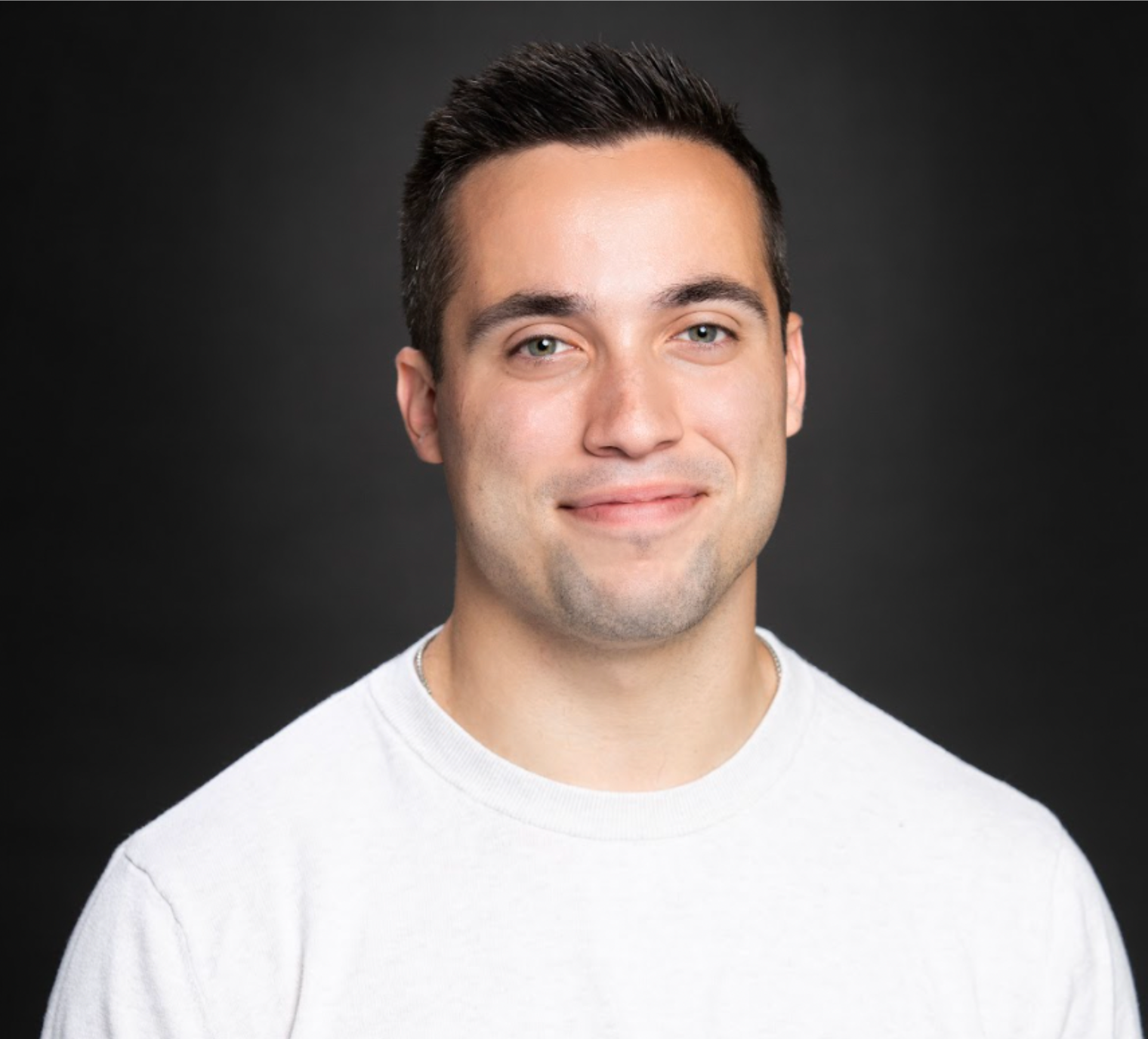
Little did the thousands of people watching know, the video had been produced in less than 10 days by a student-run music video production company 6Degree Productions, a business that originated from a capstone project by Ryan Hermann ’23.
Hermann is an alumnus of the Newhouse School’s prestigious Bandier Program for Recording and Entertainment Industries, named a top music business program by Billboard magazine. In the program he enjoyed the small class sizes, informative courses and a close-knit atmosphere.
“[Bandier] really allows you to get close to everyone, no matter what grade, and that’s what the music industry is. It’s all about connections,” Hermann said. “It’s all about who you know. It really just helps that you get along with everyone on the program.”
At the start of Hermann’s senior year in August 2022, he began working on his capstone, a semester-long project in which the assignment was to simply create a business.
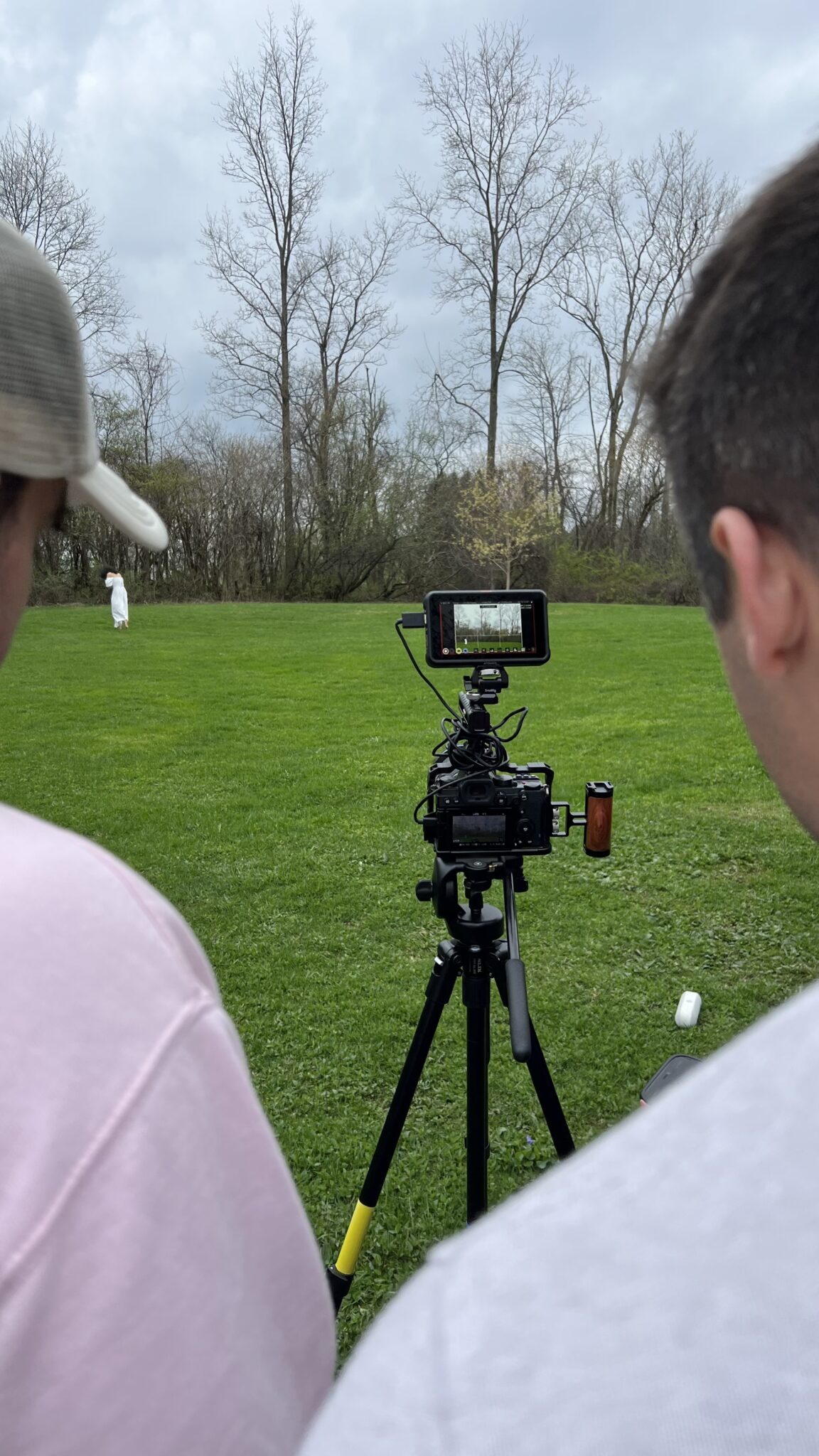
“What I’m trying to see from the capstone is students using real-world professional experiences to get outside of their comfort zone and learn as much as they possibly can about how they work best, how they produce the best results,” said Bill Werde, the Bandier program director.
Hermann decided to create a music video production company, inspired by his Atlantic Records internship the summer before senior year. As a video production intern, he worked on the set of various music videos, helping with casting, directing and production.
Having worked on both expensive and low-budget videos, “I realized that if you’re creative enough, you don’t need all the money in the world to create something amazing,” Hermann said.
With that realization and inspiration from music video director and producer Cole Bennett’s multimedia company, Lyrical Lemonade, Hermann got to work on creating 6Degree.
Through mutual connections, Hermann found five fellow Syracuse University students interested in his idea—Roger Moore, a cinematography and film/video production senior; Ashley Girouard, a communication design senior; Lena Osso, a television, radio and film senior; and two film and media arts students, sophomore Brandon Kim and junior Cabot Maloney—and created his team.
“I told them: ‘I know that all these artists don’t have all the money in the world. But I know that when we combine our creative ideas, we can do something amazing.’”
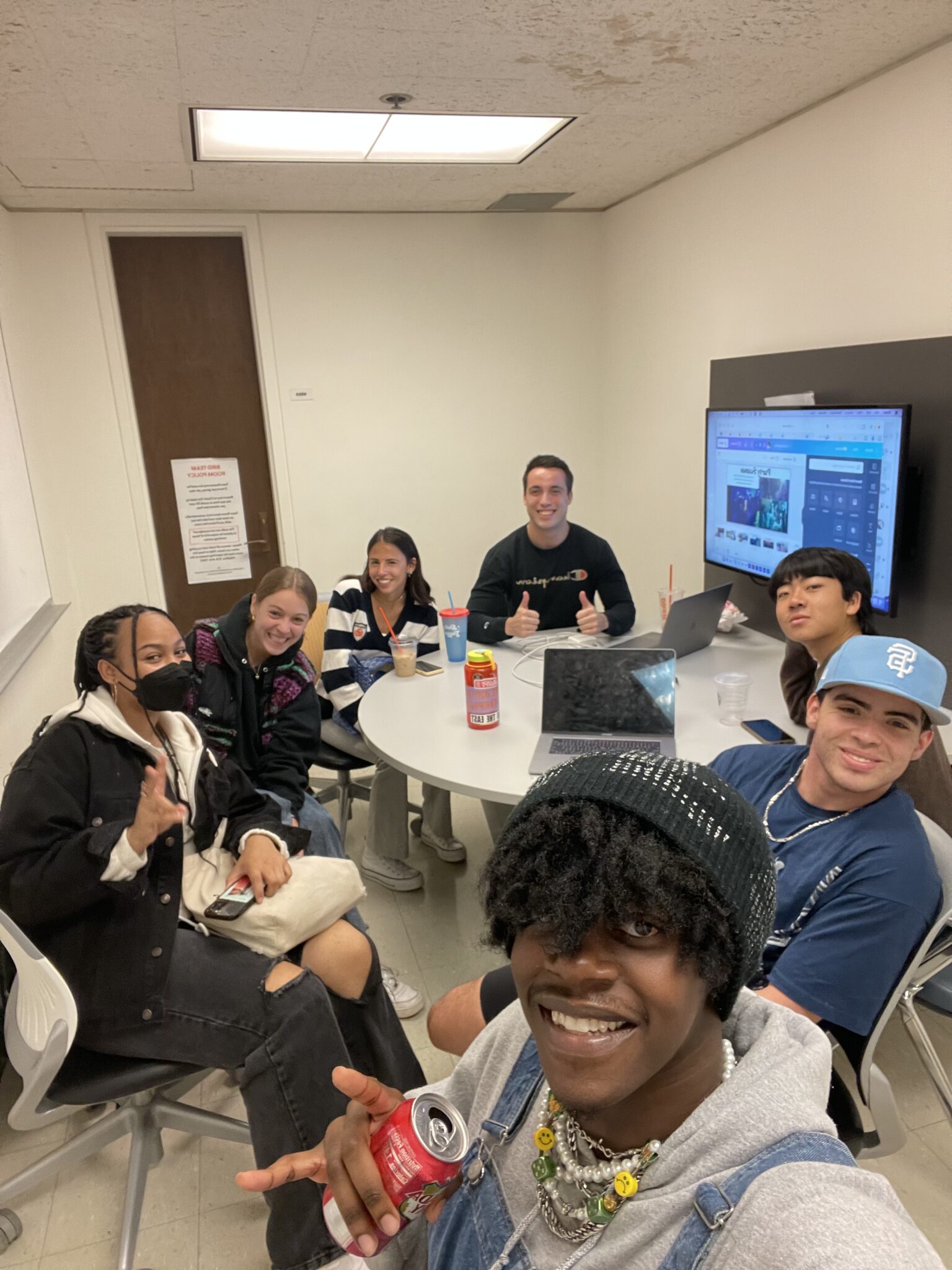
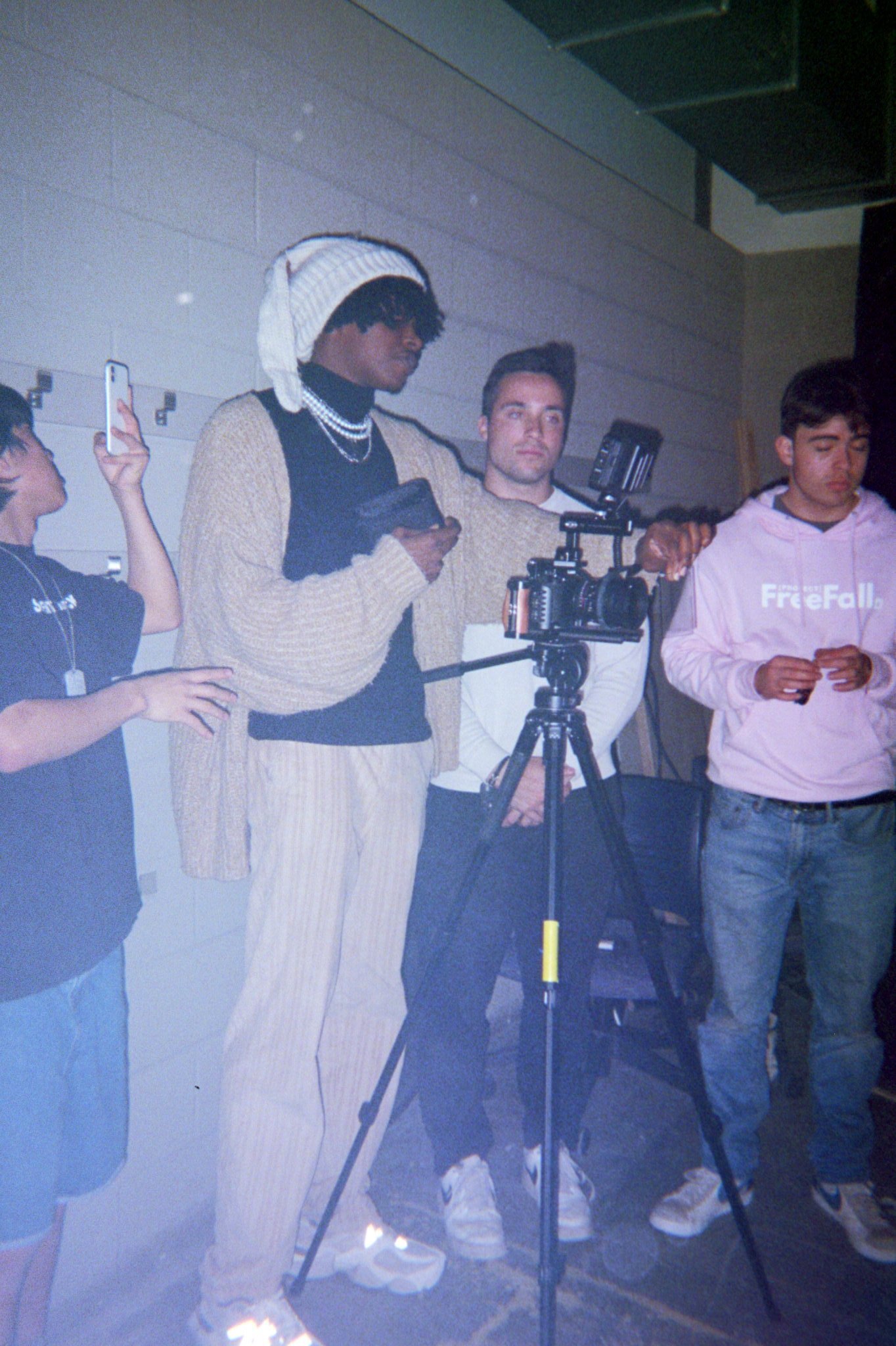
They got to work, spending hours in Bird Library and Food.com to find Syracuse-based artists who could be potential clients. As 6Degree’s leader, Hermann found and contacted artists, collaborated with them on ideas, orchestrated the shooting logistics and more.
Hermann’s company, which continued after the capstone class was over, released five music videos between November 2022 and October 2023, starting big with “Moneybag,” by fellow Bandier alumnus and musician Zach Dacierno ‘23, who releases music under the name 33col3.
The team shot, edited and finalized the video in 10 days after Hermann received a call from Dacierno saying that he signed a one-song deal with label Sun Pop and needed a short promo video to premiere in Times Square in less than two weeks.
“We were like ‘We have got to do this,’” Hermann said.
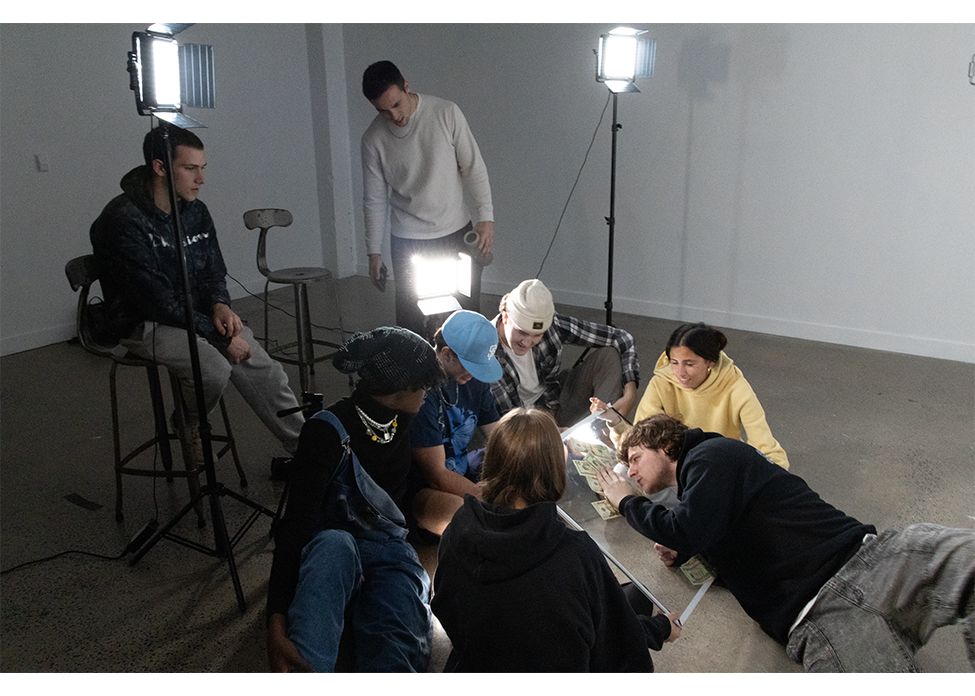
Hermann wasn’t able to get to Times Square to see the video premiere, but other members of 6Degree did, including Osso.
“[The premiere] was a super cool experience for us, especially as a new organization on campus,” Osso said. “To have such a mind-blowing experience as our first video, that kind of projected us towards other artists wanting to work with us, which was really cool.”
After the whirlwind experience, 6Degree completed a music video for BRI.’s “Never Around,” a hectic three-day shoot that included filming a car scene, a packed sorority house and a party. The chaos of the first two days made Hermann nervous about the party, “but it really went perfectly and that whole shoot was amazing,” he said.
Videos that followed were “Christmas On My Own” for Picture Us Tiny, “Goodnight, Friend” for Lauren Juzang and “Messy Room” for Sammy Curcuru, Hermann’s personal favorite video.
After Hermann graduated in May 2023, 6Degree went on hold as the founding members moved on to pursue their own careers. Hermann hopes to one day continue the production company in the future; at the same time he just started an internship as an emerging talent associate for Elektra Entertainment in New York City.

“I think I will do some stuff and eventually just put it on 6Degree. It’s shelved right now, but we’ll see if it could be continued,” he said.
For Hermann, 6Degree was an opportunity to build a project from the ground up, and navigating through hectic, last-minute shoots forced him to be a decisive leader.
“Ryan led with his passion, which I think is one of the best ways to jump into building a business,” Werde said. “I think he picked an art form and a part of the business that he had been dedicated to and he built his own, and I think that’s incredible.”
Griffin Uribe Brown is a sophomore in the magazine, news and digital journalism program at the Newhouse School.
Master’s Alumni Profile: Claribel Rivas G’20
Claribel Rivas G’20
Newhouse Master’s Program: Magazine, News and Digital Journalism
Current Position: Social Media Manager, PBS Digital Studios in Arlington, VA.
How did you obtain your current position, and what positions did you hold before it?
In November 2020, I was offered the Gwen Ifill fellowship at Washington Week where I managed the Instagram account which the team was really interested in growing. After my fellowship was over in June 2021, I was offered a position as a senior social media manager for the National Digital Content team at WETA. There, I worked with the digital content team and producers to come up with social media strategies for campaigns, identify best practices to build viewership across broadcast and online programs, as well as oversee the social accounts for WETA programs. In December 2021, I was offered a social media manager position at PBS Digital Studios, working my way up to the PBS headquarters in Arlington, VA.
What’s an average day like for you on the job?
PBS Digital Studios is a network of educational digital shows distributed on YouTube. The show topics range from STEM to music and arts. I start my day looking through any messages from the producers we work with and see if there is anything I need to review for the day. Some of the things I would review would be rough cuts of social videos, final cuts of social videos, social scripts or social assets that our show producers send us to help promote their series. Once I go through the reviews and approve them, I head over to our social calendar and see what is scheduled to be published for the day. I try to block time on my calendar for up to two hours to focus solely on publishing. Once all the posts are scheduled for the day, I attend any meetings on my schedule. Usually, our meetings are to catch up with producers and check in on how the show is going. We talk through episode ideas, social video ideas, episode schedules or any other agenda items. Once meetings are done, I usually have a few more posts that need to be published so I’ll go back and see what I’ve missed and make sure they are good to go. I also take time in the afternoon to review/moderate our comment section and respond/flag to anything that needs our attention.
How do you feel Newhouse prepared you for your current position?
Newhouse prepared me for my current position by providing a wide range of classes that helped build my skillset. From magazine writing classes to video production classes, I graduated with essential design and creative skills that would be useful for any job. Since graduating, I have used almost all of the skills I learned at Newhouse. I’ve had to manage websites, create graphics, edit social videos on Adobe, present in front of an audience and use my storytelling skills in all aspects of writing and design. Newhouse taught me so many great real-world professional skills, and I felt more than ready to enter my career after graduation.
Did Newhouse open your eyes to new professions or aspects of your field you may have not considered when applying?
After graduation, I was certain I was going to go straight into reporting for a digital magazine. However, the skills that I learned at Newhouse were transferable for a variety of different jobs. Social media was already an interest of mine, and I didn’t realize that there was more to being a social media manager than just posting on Instagram. Although publishing and managing our social calendar is a big part of my job, I also act as an editorial/social lead for some of our YouTube shows. I work with producers to craft entertaining and educational stories through social media video, while also ensuring each video meets our editorial standards and expectations. Creative storytelling is a big part of what I work on at Digital Studios and Newhouse was able to prepare me for a role that entailed the skills needed for this.
What unique features of your graduate program drew you to it in the first place?
What drew me to the magazine, news and digital journalism program was the Newhouse Diversity News Fellowship. This fellowship was granted to two students interested in the program who majored in something other than journalism in undergrad. The fellowship seemed like a great opportunity for someone like me who was interested in pivoting to reporting, especially since I had a growing interest in international reporting. Syracuse was the only school I applied to for my graduate degree, and I wanted to take a chance at being accepted into the fellowship program. I was selected as a semi-finalist and was able to receive a full-tuition scholarship to attend Newhouse! Since the program was only a little over a year long, I quickly applied to positions that would help make my resume stronger and enhance my skills, as well as trying new journalism avenues that I didn’t get to do during undergrad. I interned at NewsChannel 9 as a show intern, worked at Orange Television Network as the Promotions Manager, and even tried some broadcast roles as a bilingual reporter for Noticias on CitrusTV. There were so many great opportunities on and off campus.
Did the Newhouse Career Development Center aid you?
The Newhouse Career Development Center was helpful in connecting me with alumni that were working in positions I was interested in, as well as in the city I was hoping to move to after graduating. There were many classes where alumni would come speak to students and have an hour to network, exchange contacts and allow us to ask questions. It was all really inspiring to me to hear from alumni that were in my shoes not too long ago, and now able to share their success with students. It made me hopeful for the future.
What are some obstacles or misconceptions about your field that students ought to be aware of?
Working in journalism can be incredibly fun and rewarding. There are many opportunities to be in rooms with amazing people, travel across the country and help give a voice and platform to people who are often underrepresented or overlooked. However, even after graduating with a master’s degree, I quickly realized that I wasn’t going to start off with the most amazing salary, or even a senior-level role. Before attending Newhouse, I already had a full-time job and was on my way to moving up the ladder. Once I graduated from Newhouse, I had to pretty much start over as an intern again and work my way up. Although I worked my way up pretty quickly, I learned that sometimes you have to take a few steps back to get into the position and field that you want to be in. Only now, with a degree from Newhouse, you are much smarter, wiser, better connected and have a strong skillset to take on any role.
What moments in your career have been most exciting or defining thus far?
Every day I get to work with some of the smartest creators on YouTube. It is so cool to see how a video idea comes to life from start to finish and knowing that I was involved in part of the process makes me really proud. One of the most exciting moments was when I attended the YouTube conference Vidcon in Los Angeles and represented PBS Digital Studios. I had dreamed of attending Vidcon ever since I was 12 years old. It’s an opportunity to meet famous YouTube creators and hear their success stories. My parents couldn’t afford to send me, so I would just watch the recaps on YouTube. Being able to attend years later, as a representative for PBS and networking with other industry professionals felt like a full-circle moment. I felt like I was making my younger self so proud!
Another moment is connecting with Syracuse students at Newhouse DC! I had connected with Cheryl Brody Franklin, and she offered me the chance to be on the alumni panel for Syracuse students spending a semester in DC. It was an exciting experience because I also remember being a student, eager to learn from alumni, and now I get to share some of my knowledge! Another full circle moment.
What advice do you have for current or incoming students?
Really take advantage of your time at Syracuse and try new things! Even try things that you think you won’t enjoy and see if you can prove yourself wrong. It may surprise you! I would definitely recommend taking Corey Takahashi’s class in multimedia journalism. It really helped me think outside the box and learn how to be a creative storyteller through a bunch of different mediums. The skills I learned in that class come up in my professional life every day. From storyboarding, to identifying b-roll, to scripting, this class prepares you for any creative role you may have upon graduation.
A Newhouse Education Can Lead to Success in a Variety of Fields
Learn More about the Career Arc of Paul Marchand ’91 from Advertising Student to Top Exec at Charter Communications
Paul Marchand’s career journey from Newhouse advertising student to one of the top executives at Charter Communications took a key turn at Lord & Taylor.
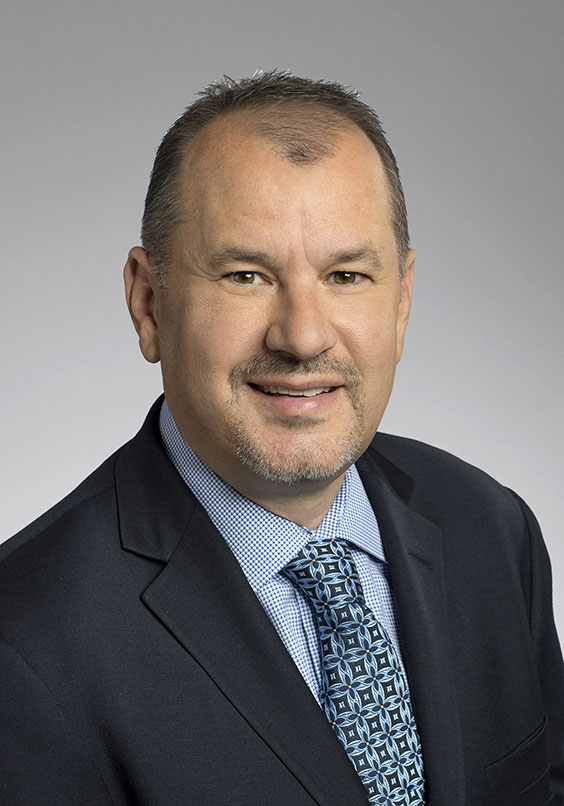
Marchand ‘91 joined a buyer training program with the department store giant after graduating from Syracuse, though he stayed involved with his field of study by placing ads in The New York Times and connecting with the heads of the company’s advertising and public relations teams.
Then, he got invited by Lord & Taylor’s human resources staff to go to college campuses to recruit prospective employees. The thinking was that he could serve as a role model as a recent graduate.
Marchand did such a good job that he ended up getting recruited himself—Lord & Taylor offered him a job in HR. Marchand is a prime example of how a Newhouse education can lead to success in an array of fields.
“I did it on a condition that if this doesn’t work, I would go back to being a buyer,” he said. “One year in, I never looked back and just realized that HR was something I was really passionate about.”
But the core skills he honed at Newhouse helped to set him on the path for success. After working in HR roles at Lord & Taylor, J.P. Morgan, Merrill Lynch and PepsiCo, Marchand is now the top human resources executive at Charter.
Marchand joined Charter in 2015 as executive vice president and chief human resources officer. A leading broadband connectivity company and cable operator, Charter is a Fortune 100 business with nearly $50 billion in annual revenue, serving more than 32 million customers in 41 states under the Spectrum brand of internet, TV, mobile and voice products.
“I never really lost the elements of the foundation of what Newhouse taught me,” Marchand said. “How do you influence your audience? How do you persuade people? How do you build advocacy? All those things that I do in my daily job get me back to my Newhouse roots.”
At Charter, Marchand oversees HR strategies, policies and practices; recruiting training and development; and diversity, inclusion and community impact at a company with more than 101,000 employees. He played a pivotal role in helping guide the company and its employees through significant growth. A year after Marchand’s arrival, for example, Charter completed a three-way merger that quadrupled the size of the company’s workforce.
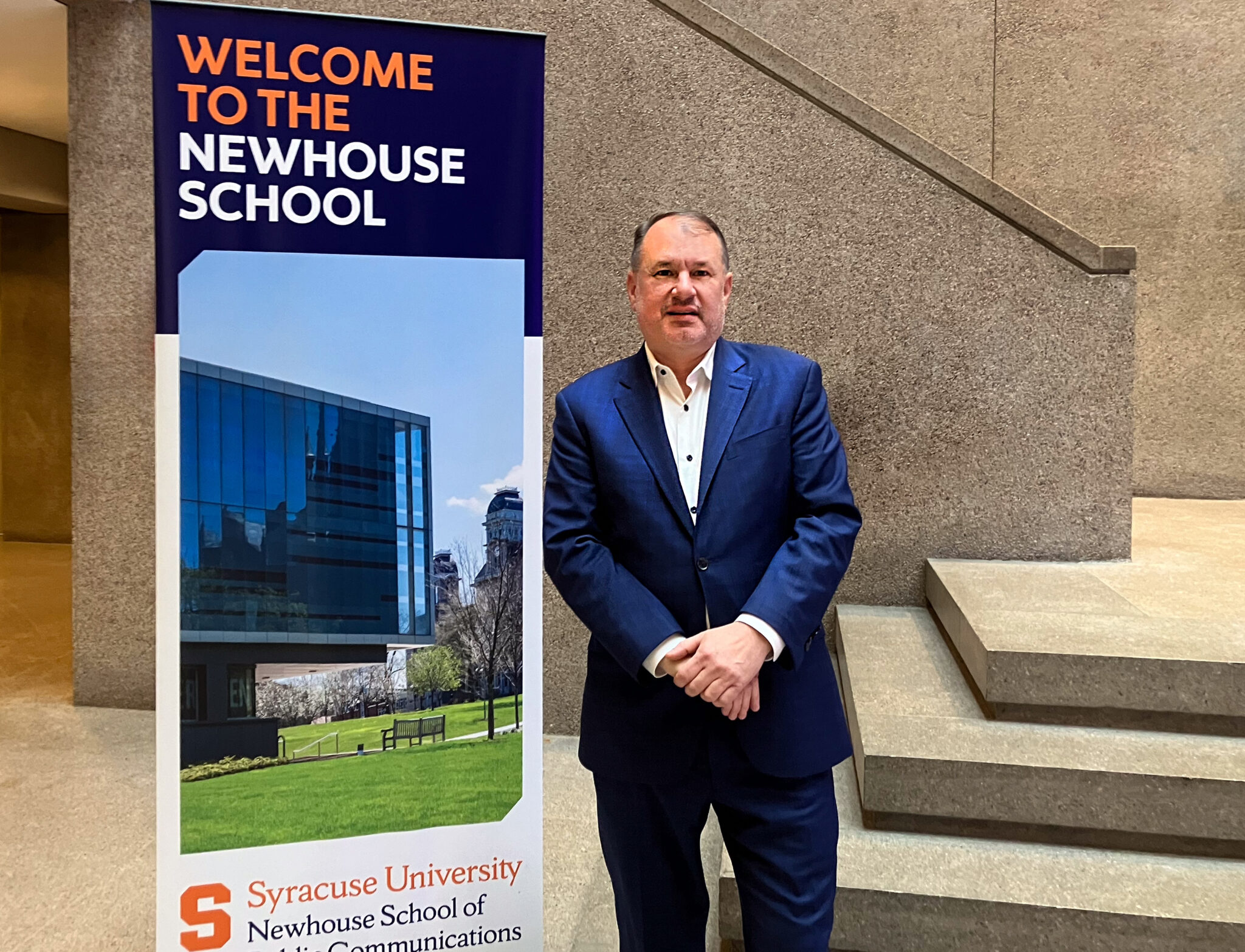
Marchand said he is proud of key Charter initiatives that have helped expand the company’s workforce and retain employees at a time when the labor market is tight, including the establishment of a minimum starting wage of $20, freezing cost increases for employee health benefits for the past 11 years and a new free tuition program for full-time employees to continue their education and enhance their skills. Additionally, he said, all of Charter’s employees are based in the United States as part of the company’s commitment to have workers live in the communities they serve.
It has been a busy time overall for Charter. Currently, the company is in the middle of a multiyear effort to build out its Spectrum Internet service to more areas, including the expansion of its high-speed broadband network to more than a million homes and businesses in unserved or underserved communities as part of the federal Rural Digital Opportunity Fund.
Last fall, the company unveiled the Xumo Stream Box, which gives users access to live TV and popular streaming apps and puts “customization and aggregation of content at top of mind,” Marchand said. A new distribution agreement reached in 2023 with the Walt Disney Company that gave Charter’s Spectrum TV customers free access to the Disney+ streaming app represented “a step forward for the video industry.”
“It’s not unique to us, it’s an entire ecosystem issue. There’s so much content, and so many ways that people consume it, and where they consume it, and we want to be at the forefront of making it easy for people to watch their favorite programming wherever they are,” Marchand said.
Consumer habits continue to evolve, driven in large part by younger viewers who have grown up watching videos on their phone or binging TV shows on a tablet. What hasn’t changed, Marchand said, is the drive and talent exhibited by Newhouse graduates in the workplace that date back to when he was a Syracuse University student in the late 1980s.
“I think there’s a grit and hard-working ethic to Newhouse and Syracuse students,” Marchand said. Charter employs many Newhouse graduates across the company, he said, and dozens of alumni can be found both in front of and behind the camera in Charter’s Spectrum News operations around the country, from multimedia journalists like Caitlin McVey in Tampa, to anchors such as Cheryl Wills in New York City, to Karl Turner, senior news director in Columbus, Ohio.
His biggest tip to current students sounds a lot like advice he might have followed when his career was just getting started.
“Be as open-minded, flexible and realistic as possible,” Marchand said. “And I think what will happen is that you’ll focus on what is the actual work you want to do, and you’ll go do that work, and find success.”
Newhouse Alumna Honored with Academy Award Nomination for Producing Film “Nimona”
When film producer Karen Ryan ‘06 heard the science fantasy graphic novel “Nimona” was being turned into an animated film in 2018, the Newhouse television, radio and film alumna left Disney Animation, where she had worked for 11 years, and moved across the country to produce the film with Blue Sky Studios.
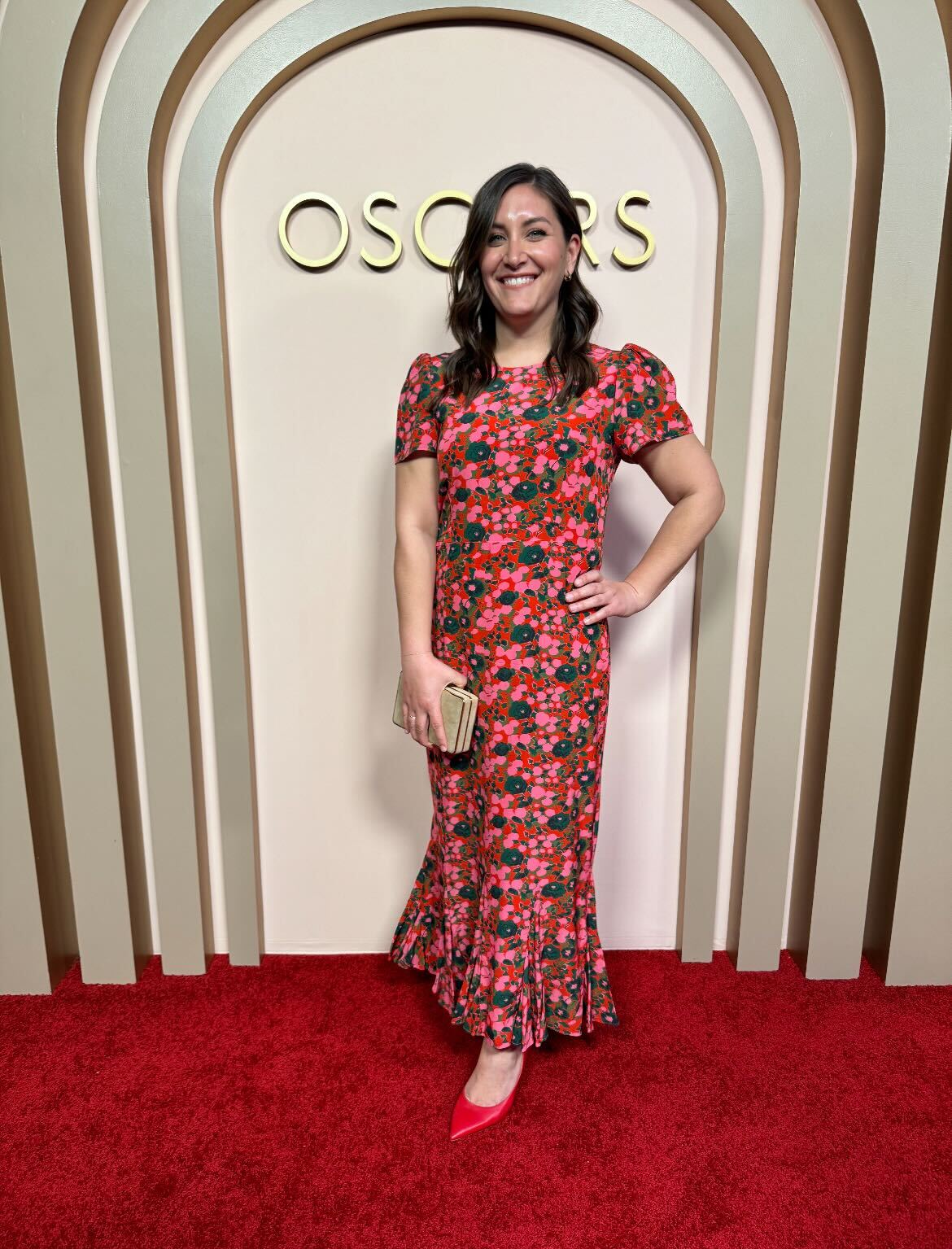
After a series of unforeseen challenges worthy of its own movie—including Blue Sky shuttering its doors in 2021 and the team thrown into a desperate mission to save “Nimona”—the film was finally released last year on Netflix. The hard work paid off: Ryan and her fellow producers earned a nomination for Best Animated Feature Film at the 2024 Academy Awards. It’s Ryan’s first nomination.
The Oscars will be awarded Sunday in Los Angeles.
How did it feel to be nominated for an Academy Award for “Nimona”?
It was pretty wild, because of what it took to get this movie made. This has been, for me personally, a six-year project. This movie has gone through multiple studios-we were shut down and canceled at one point-so the fact that we were able to bring the movie back without compromising any of the things we wanted in it and see it embraced with an Academy Award nomination felt great. It was awesome.
What were some of the challenges you faced when producing “Nimona,” especially after the closure of Blue Sky Studios in 2021?
This movie was tricky. It was the hardest project I’ve ever been a part of and the challenges were just getting the film to the screen. So there’s all the typical challenges that come with animation when you want to push the medium. And then [Blue Sky Studios] closing was just heartbreaking. We were all family over there. We had this film “Nimona,” which was such a special project at Blue Sky. And then all of a sudden, in this one phone call, it’s “Everything’s gone, but we have these reels. What are we gonna do?” We just spent every minute after that trying to find a way to save the movie. So we went around Hollywood, we played it for everybody we could, and Megan Ellison at Annapurna Pictures saw it and supported it immediately. We got her to fund it, Netflix wanted to distribute it and everything just kind of changed from there. We got to make the film that we wanted to make.
How did you get the opportunity to be a producer on the film?
I was working at Disney Animation where I was for 11 years, and I heard about “Nimona” being made at Blue Sky Studios. A good friend of mine, Patrick Osborne, was the director at the time. So I knew him, I knew of the graphic novel and when the opportunity came up they called me. They needed a producer and I just couldn’t pass it up. So, I left and went over to Blue Sky.

What does “Nimona” mean to you and what do you hope audiences take away from it?
I love Nimona. That character is the reason I came to the story. What I think is so special about her and the first thing that really got me is that she knows who she is and she doesn’t want to be somebody else. She just wants people to see her for who she is and to feel loved and accepted that way, and I think that is very relatable and a story we don’t really see much, especially with female characters. So, this movie was our love letter to people who feel like an outsider or like they don’t belong. To people who watch the movie, I hope they’re entertained because I think it’s hilarious and I love this film. I also hope it makes people get to know each other a little bit more and not judge people so quickly by what we assume they are. There’s space for everybody and you shouldn’t have to compromise to be able to find a community.
What opportunities did you take advantage of as a television, radio and film student at Newhouse?
I think, for me, I really wanted to work in production. I wanted to make films, and we had a lot of opportunities to do that at [Newhouse]. I took the production track, even though we didn’t have it [at the time]. I took every production class I could. At colleges like Syracuse, try all of it. Do the story you were not sure about because this is your time to experiment. When you get into the workforce, you’re mostly working on other people’s stuff for a long time. So, if you have a crazy idea and you want to make it, do it.
What advice do you have for current Newhouse students looking to be a film producer?
I think there’s so many different tracks. There’s no one way to do it, but the more you kind of let your path wander and go towards what excites you in the moment, I think that’s how you build experience that leads you to producing. So, if you want to be a producer, get to know how movies are made, understand the story process and understand the medium in which you’re working. If it’s live action, who’s your creative team? How do you work with the cinematographer? How do you get a director’s vision on screen? In producing, you’re responsible for the entire thing, so it’s not just the money, it’s not just the delivery or selling the movie. So, you really have to understand as much of it as you can and I think that makes the better producers.
Samantha Rodino is a sophomore in the television, radio and film program at the Newhouse School.
Master’s Alumni Profile: Adrianna Adame G’22
Adrianna Adame G’22
Newhouse Master’s Program: Magazine, News and Digital Journalism
Current Position: Indigenous Democracy Reporter at Buffalo’s Fire, Bismarck, North Dakota
How did you obtain your current position, and what positions did you hold before it?
I obtained my current position after successfully applying to Report for America for the 2023-2024 cohort. Last December I completed my time as a Newhouse Graduate Minority Fellow. Once the holidays ended, I immediately began working on my application as I went on the job hunt. My former professors such as Aileen Gallagher and Melissa Chessher recommended that I apply to Report for America since I wanted to go into local news. It wasn’t until after a lengthy three-month long interview process that I found out I got the role at Buffalo’s Fire, a Native-led nonprofit online news organization.
What’s an average day like for you on the job?
My schedule can be quite hectic at times, though I try to be well-organized. I usually start off the day responding to emails and calling sources to schedule interviews for stories. I am reporting on voting rights, tribal council, school board and rural co-op meetings, tribal college stories and K-12 education, but my main beat is Indian education.
Then I go onto Slack and check in with my editor/the team. Sometimes I have Zoom meetings –– from June up until December 2023 I attended monthly meetings for the Solution Journalism Network’s rural cohort. Twice a week, from 1 p.m. to 5 p.m. on Tuesdays and Thursdays, I go to the downtown office space we rent for my office hours, where members of the community are able to come visit me to chat, bring up concerns or discuss story ideas. Throughout the day I am also reporting on events, meeting sources for pictures/interviews and of course writing the story. Once I complete a draft, I contact my editor and then we begin going through the editing process together.
How do you feel Newhouse prepared you for your current position?
Newhouse prepared me for my current position by teaching me multimedia and networking skills. Prior to Syracuse, I was solely a writer. After Syracuse, I was able to compete with others applying for my role because the magazine, news and digital journalism program gave me the ability to be a well-rounded and detail-oriented storyteller. Boot camp during summer 2021 really set me up for success and freshened up my reporting skills. My instructor, Julie McMahon, took the time to check in with each of us and gave us advice on how to find stories and improve our writing. Professor Harriet Brown’s News Reporting class during the fall took me to the next level in my reporting as I began to incorporate data and other visual elements into my work.
As a part of my fellowship, Newhouse also funded my first Native American Journalist Association— now the Indigenous Journalist Association—conference in Phoenix. By providing me that opportunity, I got to connect for the first time with other Indigenous journalists. Despite being an enrolled member of the Chippewa Cree Tribe in Rocky Boy, Montana, I never lived on or visited my reservation. I grew up with the Mexican American side of my family in North County, San Diego, so while I got to learn some aspects of that side of my culture, I always felt disconnected from my Native side. Attending the conference was a big part of my reconnection journey.
Did Newhouse open your eyes to new professions or aspects of your field you may have not considered when applying?
Newhouse opened my eyes to a plethora of new professions and variety in my field. While I am primarily a writer, I became interested in multimedia storytelling after taking Professor Corey Takahashi’s class. After participating as a mentee in NAJA x Next Gen Radio in April 2022, I really began to get interested in audio stories and just began working with audio in my current work. I also gained an interest in editorial writing while in Syracuse. Though local news will always be my passion, I don’t mind expanding my horizons and trying new things.
What unique features of your graduate program drew you to it?
I only applied to two graduate programs—UC Berkeley’s Graduate School of Journalism and Newhouse. While I got into both programs, I was already leaning towards Syracuse because of the amount of networking and professional opportunities offered. Magazine, news and digital journalism also seemed more aligned with my professional goals. I wanted to evolve from print to digital journalism and expand into multimedia storytelling. Once I was offered the Newhouse Graduate Minority Fellowship, my heart was set on Syracuse.
Did the Newhouse Career Development Center aid you?
As a part of the Newhouse Graduate Minority Fellowship, I worked as an intern at Syracuse.com for a year. I chose to write features as well as some arts and entertainment articles. Though it was a hectic period, I am glad I had the opportunity to work with my editors, including the thoughtful and detail-oriented Alaina Beckett. Prior to Syracuse.com, I also was a Newhouse x POPSUGAR Voices fellow, where I wrote editorial pieces on the fitness, love, beauty, family, living, technology and Latina verticals. Some of my local news stories from the first six months in my program were also published in the Stand.
What are some obstacles or misconceptions about your field that students ought to be aware of?
After my cohort graduated, the job market was tough due to layoffs in the industry. Many people I know are still having trouble finding full-time work in journalism. It can be very discouraging at times. I know it might not sound helpful at the moment, but in time things do work out. The job hunt is a painful waiting game. But in the end, all the hard work you put into applications will pay off. It only takes one yes for your life (and career) to change for the better. Stay determined, no matter how hard things get.
What moments in your career have been most exciting or defining thus far?
I’ve only been at Buffalo’s Fire for six months, so I’m still fairly new in my job, but there have been few cool opportunities I’ve been able to experience. Back in November, I was invited as a mentor by Doug Mitchell for IJA x Next Gen Radio: Albuquerque. I assisted my uber-talented and super organized mentee, Molly Mamaril, as she reported her audio story on a Native Hawaiian scholar who is aiming to return home after she receives her doctorate to give back to her community. It wasn’t that long since April 2022 when I was a participant in NAJA x Next Gen Radio program, so I was grateful to be welcomed back so soon. Not only did I reconnect with old friends, but I made new ones as well. It felt amazing to be surrounded by other Indigenous journalists and also be in the position to help guide someone on their project.
What advice do you have for current or incoming students?
I first came to Syracuse right after classes were back to in-person during the Covid-19 pandemic. After losing the last year of my undergrad experience, I decided during grad school I would make the most of it and say yes to everything. I encourage current and incoming students to step out of their comfort zone, for both their social and professional life. You’re only able to expand your skill set and meet new people if you try new things. One of my favorite classes was Professor Rawiya Kameir’s Critical Writing course. While at Newhouse I was experimenting with different forms of writing outside of the news. Kameir’s class taught me how to analyze, structure and write creatively. I appreciated the chill atmosphere and healthy environment that Kameir fosters.
Designing for Good: Newhouse Alumna Creates Mindful Work in Cape Town Internship
Shannon Kirkpatrick ‘23 wants her designs to make a difference.
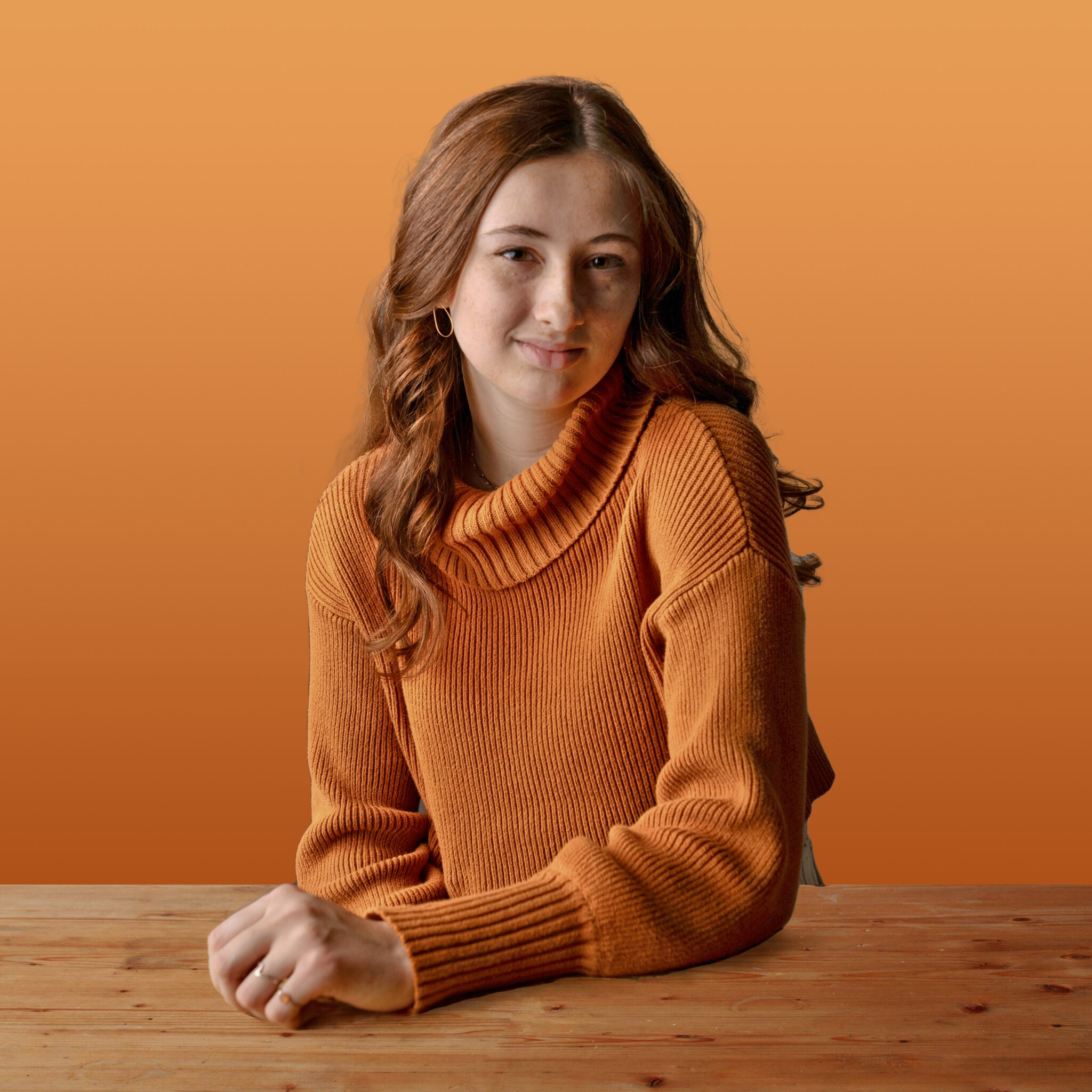
From high school art enthusiast to visual communications major to graphic designer at the Kolisi Foundation in Cape Town, South Africa, her journey encapsulates a narrative of continuous learning, evolving interests and the pursuit of meaningful design anchored in social impact.
For Kirkpatrick, creativity in art has been a passion since childhood. Growing up in Syracuse, she leaned into her inclination towards visual modes of expression through printmaking, drawing and painting in high school. After her acceptance to the Newhouse School, she initially pursued a degree in television, radio and film, but the film industry didn’t feel like the right fit, she said.
She attended a presentation about the power of design in storytelling by Bruce Strong, a visual communications associate professor, and “it sparked something deep down,” she said.
Following a recommendation from Strong, Kirkpatrick met with Claudia Strong, a visual communications adjunct professor. The meeting steered her towards the realm of graphic design—a pivot that felt more aligned with her evolving interests.
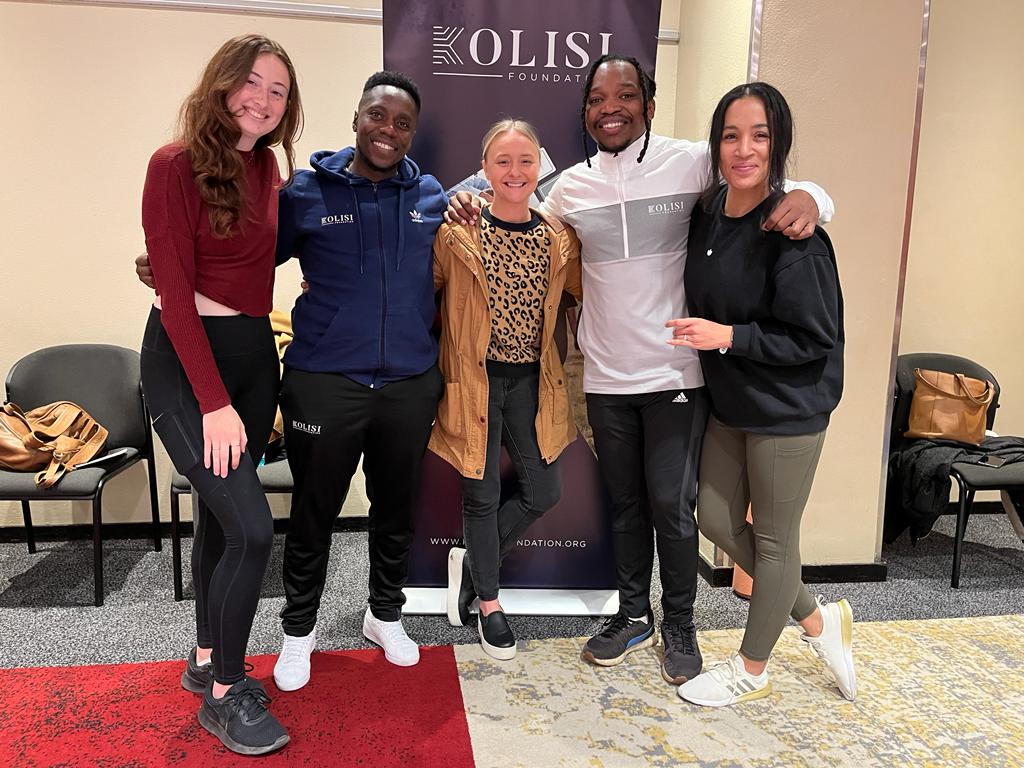
“I walked into Professor Claudia Strong’s office hours the same day, and she must have given a compelling case to join the vis department because I switched my entire career path shortly after,” Kirkpatrick said.
She found the graphic design program in the visual communications department wasn’t just about aesthetics; it was about narrating stories, articulating ideas and creating a dialogue through design. As she delved deeper into the program, Kirkpatrick found a platform to hone her skills as a designer for The Daily Orange, a student-run campus newspaper.

“The opportunity to apply my design and art direction skills to a fully functional, award-winning newspaper like The Daily Orange was an incredibly unique opportunity that you don’t get in other, more traditional design schools,” she said. “Being a part of the DO shaped the designer I am today.”
In spring 2023, an exciting opportunity arose: a graphic design internship with the Kolisi Foundation in Cape Town, South Africa. The nonprofit organization’s mission is to combat inequality in South Africa, with initiatives focused on food security, education, gender-based violence and access to sports.
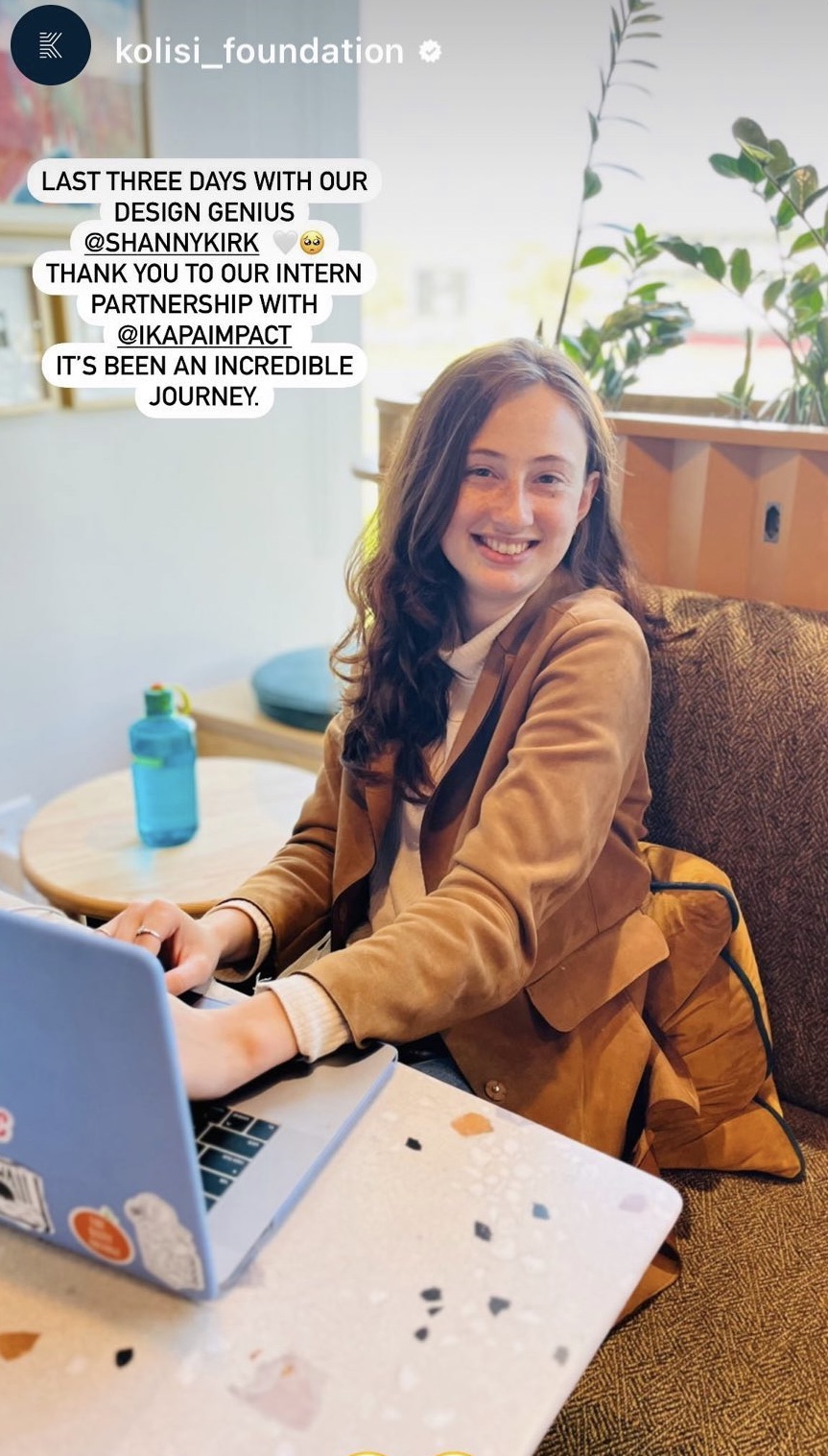
“From the first moment I heard about the internship, to the following meetings and interview, I was feeling a mixture of disbelief, excitement and curiosity,” Kirkpatrick said.
She graduated from Syracuse University in May 2023 and quickly moved to a new continent, living and working in Cape Town for 10 weeks that summer. As a member of the foundation’s graphic design team, Kirkpatrick assisted with a variety of print and digital design projects, including an annual report, promotional materials and animated social media graphics.
“Working with the Kolisi Foundation team had that real-world connection I sought,” she said. “The work I made mattered, and I could see the communities where my designs went first-hand. I’m happy to know those designs will continue impacting people there, every day.”
The initial days of living in Cape Town were challenging as she navigated through cultural changes, but an adventurous hike with newfound friends at sunrise to Lion’s Head—a mountain overlooking Cape Town—marked a shift.
“At this point, about halfway through my time in South Africa, I was finally starting to feel at home,” she said. “I had established strong friendships, felt comfortable with my host family and started finding my favorite hikes and cafes in Cape Town.”
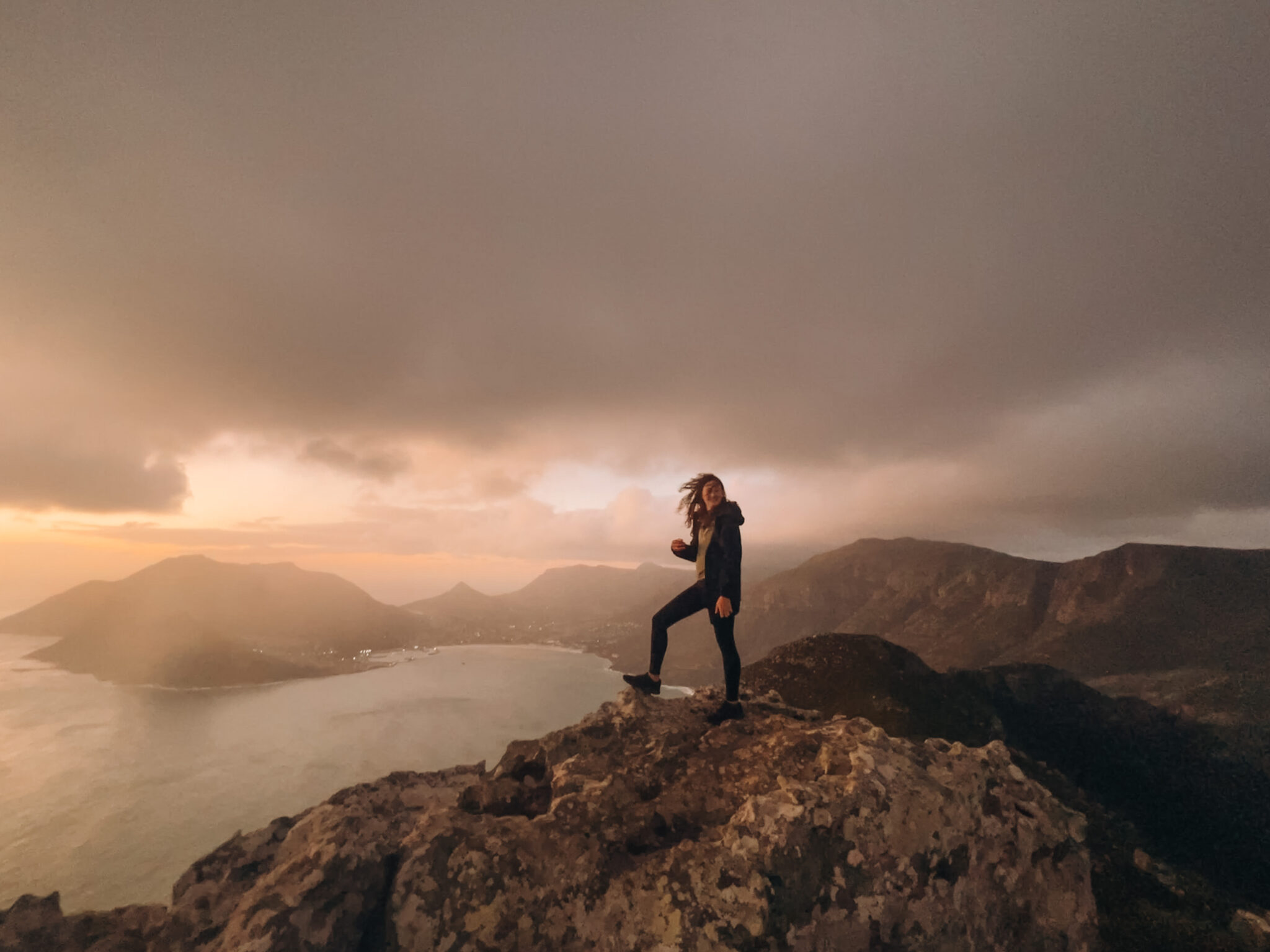
As the internship came to a close, Kirkpatrick found that the designs she was producing, the intention behind them and her future were irrevocably changed.
“Combining a new cultural experience with a design internship had a profound impact on me—I saw the true meaning behind ‘designing for good,’ where my designs would help this incredible nonprofit tell its stories,” she said.
“Afterwards, I decided to strive towards this career theme: creating designs that make a tangible difference.”
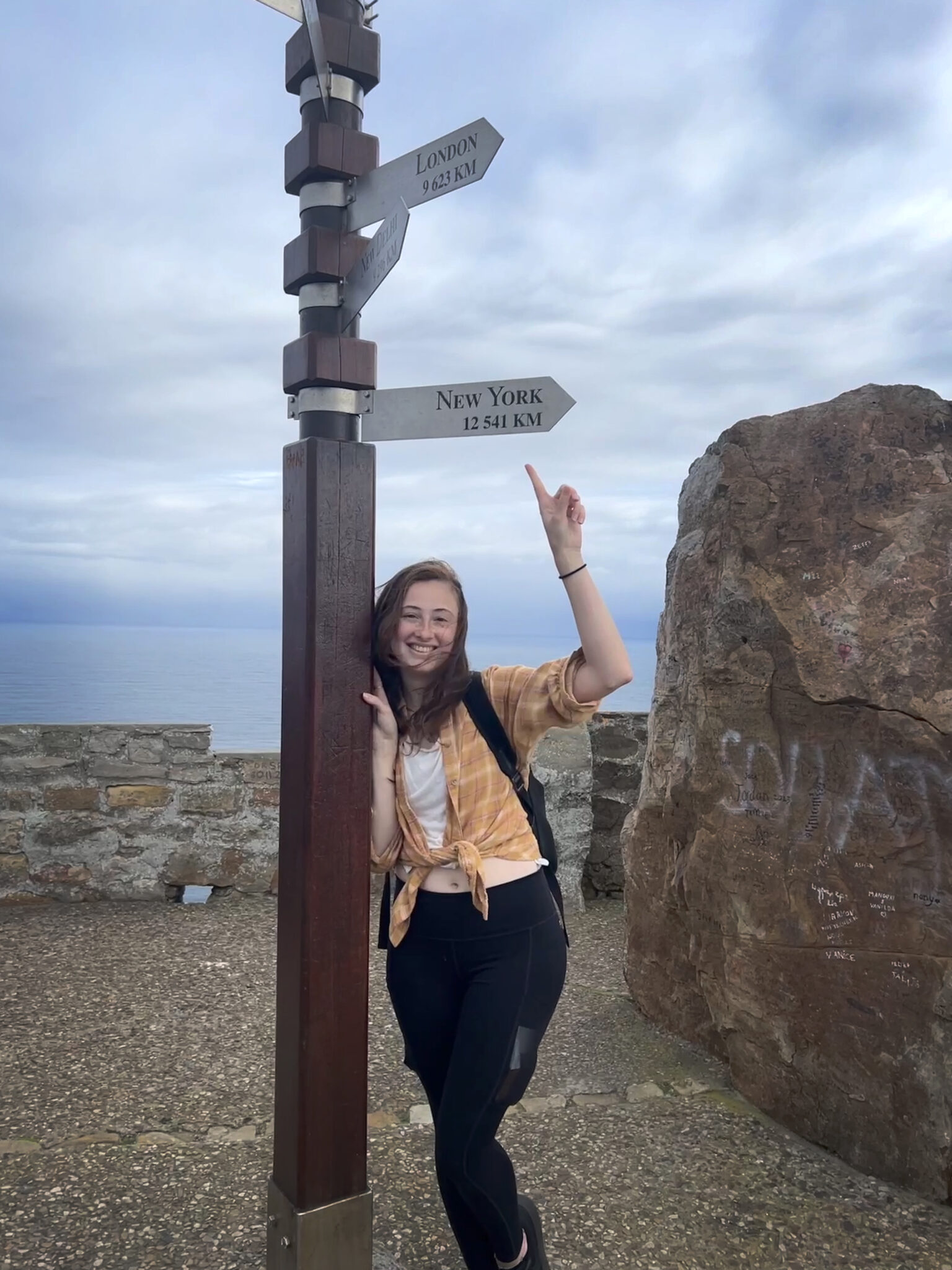
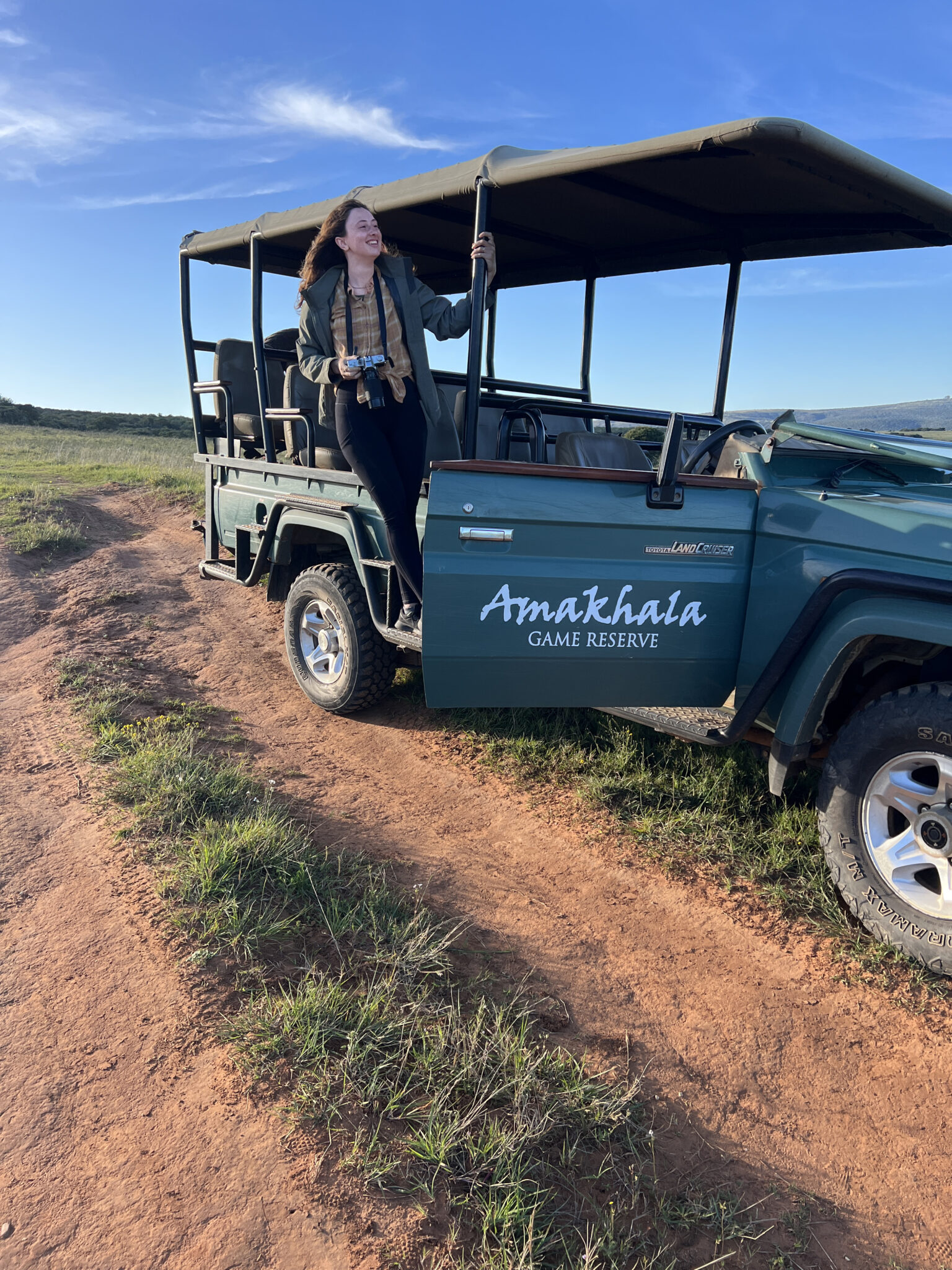
Now back in the United States, Kirkpatrick remains committed to designing purpose-driven work that creates positive change. She still designs for the Kolisi Foundation remotely and continues to shape the trajectory of her career as she blends her passions for art and social impact.
“This three-month experience in South Africa broadened my creative horizon—I know what it’s like to design with heart and see the tangible results, and now there’s no turning back.”
Allen Huang is a graduate student in the media studies program at the Newhouse School.
Master’s Alumni Profile: Justin Maccagnan G’22
Justin Maccagnan G’22
Newhouse Master’s Program: Television, Radio and Film
Current Position: Production Support Engineer at NBCUniversal and CNBC Business Channel
How did you obtain your current position?
This position, weirdly enough, came through a LinkedIn recruiter. My profile was suggested to her as I had a large technical background working as an engineer for trucks, stadiums and universities. I’ll be honest, I thought it was spam, so I ignored it, but after looking her up, I decided to talk to her. We had two interviews and here we are. It has been nothing short of spectacular since.
What’s an average day like for you on the job?
As a production support engineer, I support all technical equipment for CNBC business channel and NBCUniversal, specifically the New York offices at the NASDAQ. This includes camera equipment, graphics operation systems, INews software, transmission technology and control room operations (any equipment breaks, I am fixing it). Aside from this, our shop has also merged with the IT department. So, I am also tasked with making new employee work accounts, troubleshooting computer programming issues, internet software updates, fixing PC routers and dealing with any issues that may be IT related.
Any given day can be vastly different, which is why I love this job so much. We are a call support shop, so we respond to whoever calls with an issue, meaning one day I could be working on an INews issue and the next I am working on a camera problem in one of the main studios. On a regular day, I am also working on major projects that the network needs done. These projects come in spurts, but they are very exciting, and I love knowing that I am working on the future studios/equipment of CNBC.
How do you feel Newhouse prepared you for your current position?
Classes in sports and TV production were what helped prepare me the most for my current position. With professors like Olivia Stomski and Andy Robinson, I was able to obtain base knowledge of how to work in sports production and operate cameras as well as learn technical aspects of production. Specifically with Robinson’s class, the greatest part was staying after our show tapings and studying the technical aspects that went into operating the graphics system as well as the TD switchboard. I never thought staring at wires would be so enjoyable but after seeing how every wire contributed to the broadcast, I was hooked. Without Robinson’s class, I don’t know if I would have gone in the direction I did.
All of the hard skills I learned were from being an engineer intern for the ACC Network and Syracuse Athletics. I did this job for the entire time I was in Syracuse. Things I learned included how to make ethernet cables, hardwiring cameras, setting up audio consoles, troubleshooting video signal issues and cleaning fiber cables. I developed a very close friendship with the chief engineer of Syracuse Athletics, and that friendship both led to my current job and is a friendship I will have for the rest of my life. In truth, Newhouse as well as Syracuse Athletics helped guide me to what my true-life passion was.
Did Newhouse open your eyes to new professions or aspects of your field you may have not considered when applying?
Through Newhouse, I was introduced to the ACC Network and Syracuse Athletics. At first, my objective was to just get in the door and work live sporting events. Scott Hecht, the then director of ACC Network, appreciated my enthusiasm and asked if I wanted to be an engineer intern. I had no clue what engineers do, but to me, it was an opportunity, so I jumped at it. That one leap of faith was what led me to where I am now.
The greatest thing that happened to me while at Syracuse was working for Tom White, the chief engineer for Syracuse athletics. Up until I met Tom, I had never known what an engineer does. Tom took every chance he had to teach me something new. As an engineer, your main task is knowing every single piece of equipment, wire and cable that goes into a specific broadcast. You are the line of defense if something falls apart and all eyes look to you to fix said problem, so you are always learning something new. With Tom, we dealt with lots of issues, and I began to realize this is the career path I wanted to pursue. Very few people want to become broadcast engineers, so this helps the field as there are usually job openings for these positions. I saw this as not only an exciting growth opportunity, but one that I could make a full career out of.
What unique features of your graduate program drew you to it?
One of the key features of my program was that I was brought on as an instructional associate. As someone who aspires to be a college professor one day, I saw this as a wonderful opportunity to get some teaching practice. I worked with first year and sophomore production courses and loved every minute of it.
The television, radio and film program is arguably the most unique program at Syracuse. It is an amazing program in that the objective of both the professors and the curriculum is to allow the student to grow their mind as well as tap into their creative potential. The program’s objective is to help you find your creative voice and run with it. Aside from that, this program also uniquely combines all facets of the film and entertainment industry into the coursework, including screenwriting, pitching films, business models of the film industry, production and law practices that all networks/film houses follow, giving a well-rounded knowledge of the entertainment world.
Lastly, if you join the program and you feel you may not be bonding with the film material as much, Michael Schoonmaker, the television, radio and film department chair, is more than willing to help find you electives that are in the other programs of Newhouse. I had several graduate friends take courses outside the normal TRF curriculum and they couldn’t have been happier.
Did the Newhouse Career Development Center aid you?
The Newhouse Career Development Center did help me, both with my resume as well as job leads. Bridget Lichtinger was crucial to my success at Syracuse and my resume looked a lot better once we went over it a couple of times. She is a true asset to the school.
What are some obstacles or misconceptions about your field?
A lot of young students that get into the broadcast engineering field may think they just set up the equipment and then leave it for the people to operate. Unfortunately, this is anything but true. As an engineer, your job is to know where everything goes for a broadcast. And when I mean everything, I mean EVERYTHING.
I’ll use an example: Say you are using a Sony camera. As an operator you just need to know which buttons on the camera do what, how to shoot and what to shoot. As an engineer, you need to know button functions, where do the wires that are connected to the camera go, what signal goes to those said wires, what is the lens type of the camera, what unit powers the camera and what signal sends to the operator so they can see what they are shooting. When you think about this, most people’s minds explode and you’re not expected to know all this right out of the gate- but when you work many years in the field, you are expected to eventually know all the information pertaining to those systems spoken about.
What moments in your career have been most exciting or defining thus far?
There have been many, so I’ll name a couple:
The engineer job with CNBC and NBCUniversal: This is a position most people don’t get until they are in their 30s due to the level of knowledge required. By a stroke of luck, I was brought on with an expectation they would train me on equipment for the long term, so I am always appreciative that I got such a unique and amazing opportunity.
Phillies corporate event: This was the first major corporate event I had worked for the Phillies and due to a callout, I was left to man the event by myself. I set up everything, operated all consoles and broke down everything afterward. It was a big moment for me as it increased my confidence that I could do these events by myself.
What advice do you have for current or incoming students?
One of the greatest assets of Newhouse is the main control room for Syracuse Athletics and ACC Network out of Syracuse. Go inside, look around and talk to the people that run operations there- they are always looking for dedicated students that can work events and want to learn. Whether you are someone that wants to be an on-air talent, producer, replay operator, or even engineer, they always have spots available for people to get involved.
Even if you don’t enjoy it as much as I did, I promise you the most successful producers and on-air talents are the ones that know about the technical aspects of a TV broadcast. It can only help you in the long run.
The classes I recommend are any production classes with Olivia Stomski and I also recommend any courses with Kelly Leahy, Robert Thompson and Shaina Holmes. Three of the best professors I had while at Syracuse.
Master’s Alumni Profile: Jerald Pierce G’18
Jerald Pierce G’18
Newhouse Master’s Program: Goldring Arts Journalism and Communications
Current position: Chicago Editor at American Theatre Magazine, Chicago, Illinois
What set you on your career path?
Well, I got my undergraduate degree in acting and realized fairly quickly that that life wasn’t for me. I still loved theatre, so I wound up looking for other ways to stay involved. I saw a (now defunct) website advertising that it was looking for theatre reviewers who were also theatremakers themselves. I had strong opinions about theatre and it was a pretty low risk opportunity, so I gave it a try. I wound up running that site for a bit when the editor needed to step away, and I realized that I absolutely loved criticism, both writing and working with other writers on their reviews. So, when I got to the point in my life where I was thinking about getting a masters degree, Newhouse and the AJC program were one of a few different paths I was interested in, and I let the admission fates decide what was next. That’s all to say, basically I just kept following open doors until I made my way to my current path.
What skills did you acquire at Newhouse that you use in your work now?
I came into Newhouse with basically zero reporting or journalism knowledge beyond what you can glean simply from reading a lot of news. I could form complete sentences to give my opinion on art, but everything I know about journalism, reporting and editing I got from Newhouse.
What experiences or activities that you took part in outside the classroom stands out from your time as a graduate student at Newhouse?
The easy answer is to point to any of the trips I was able to take while at Newhouse that I never would have been able to take on my own. Attending the Toronto Film Festival, traveling to the Spoleto Festival in Charleston and spending time in Israel were all life-changing experiences that I never would have had the opportunity to do, and now they’re all foundational in one way or another to who I am as a reporter and editor.
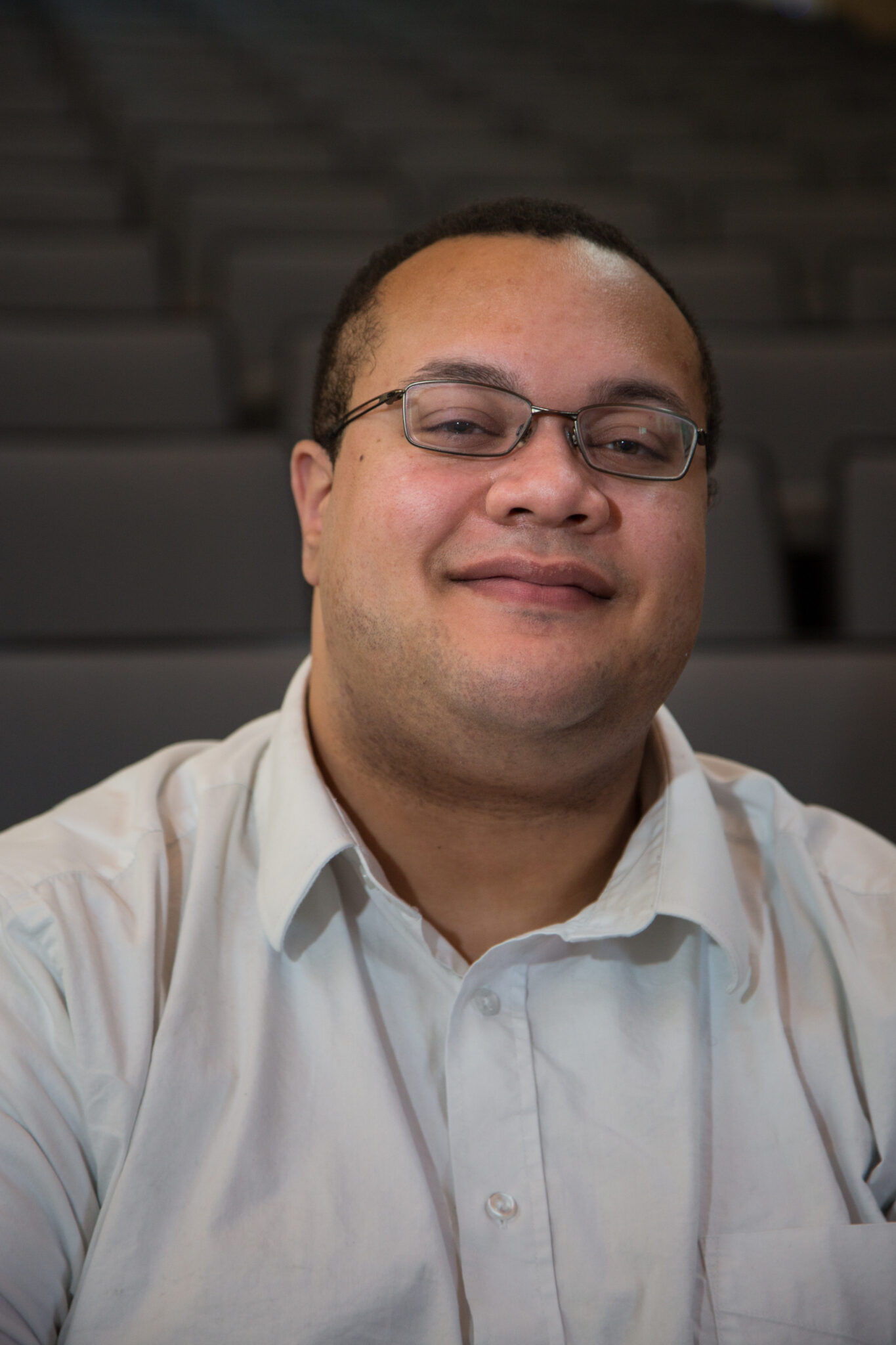
What does it mean to you to be a Newhouse alum?
Newhouse has been a great support system for me so far in my career. I’m not a big “networking” person, but Newhouse comes with a built-in network that continues to pop up everywhere I go (American Theatre Magazine’s current managing editor is also a Goldring alum, for instance). Over the years, I’ve leaned on folks I met at Newhouse for career advice and job references, so being an alum has been a real support system during my career journey.
What advice would you offer someone thinking about pursuing a graduate degree?
Take the leap. I went to graduate school at 27, marking a complete change in career path. It can be hard to find time and opportunities to solely focus on skill-building post-college. Grad school gave me a chance to hyper-focus on what I wanted to learn with minimal distractions, and that’s incredibly valuable.
Where do you see yourself in 10 years?
Ideally, I’d love to be the lead theatre critic at a publication somewhere in the country. As someone prone to walking through any door that is open, I’ve learned that I never really know where life is going to take me. But if I could shape that path, I’d want it to lead to being a trusted source of theatre criticism for a community.